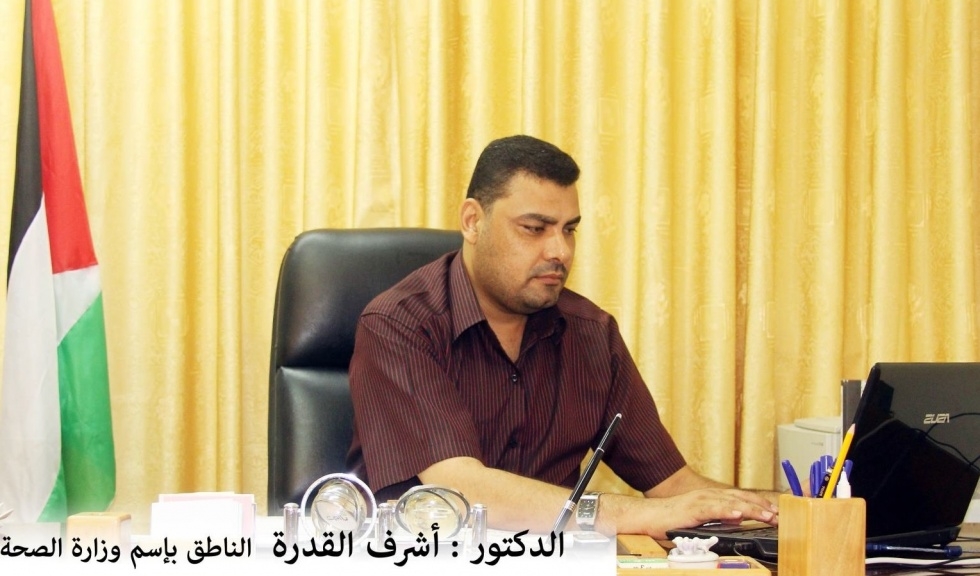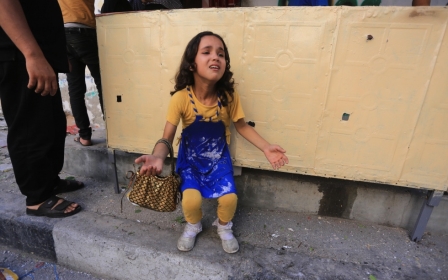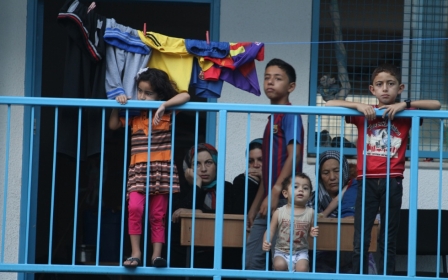Documenting death: the man who counts the bodies in Gaza

By Adel Zaanou
GAZA CITY - Inside Ashraf al-Qudra's cramped office in Shifa hospital, the phone never stops ringing, with news flooding in of the latest victims of Israel's devastating 20-day military operation.
With over 1,060 people killed and more than 6,000 wounded, counting the dead is a full-time occupation for the 41-year-old spokesman for Gaza's emergency services.
Since the operation began on July 8, Qudra has been sleeping just two hours a night on a mattress in his office, his staff updating him round the clock on the latest victims of the Israeli offensive, his phone constantly ringing with journalists seeking details of the latest toll.
He lies down for a rest, but his much-needed siesta is swiftly interrupted as an aide rushes in.
"Doctor Qudra, there are many many dead and injured in a shelling on Shuhada hospital!" exclaims a breathless assistant.
The 41-year-old immediately begins scribbling down notes as phones ring and a wireless radio crackles with news of more death and injury across war-torn Gaza.
He calls the hospitals, coordinating efforts to keep track of the wounded.
"There's no safe place from the Israeli shelling," says Qudra, a tall man with a neatly-trimmed beard who has been doing the job for four years.
"They targeted Al-Wafa hospital, Shahada hospital and the European hospital, which I feared would happen," he said.
"I don't doubt they'll hit this hospital at some point," he says, watching out the window as an ambulance unloads more of the wounded.
"The enemy has gone beyond insane, there's disaster after disaster."
Unpaid for months
Figures released by the UN's humanitarian agency OCHA indicate nearly three quarters of the victims were civilians and around a quarter of them children.
And it says 18 hospitals, clinics and medical centres have been hit and damaged by Israeli shelling.
Israel has lost 43 soldiers, and three civilians have been killed by cross-border projectiles.
Shifa is the largest of Gaza's seven hospitals, all of which have been working around the clock since the Israel operation began on July 8 with the aim of eradicating cross-border rocket fire, which later expanded into a ground operation.
A call comes in on the landline -- five more dead and at least 70 wounded, among them doctors and paramedics in a strike on Shuhada hospital in Khan Yunis.
The phone rings again. But this time it's his wife.
Qudra cracks a rare smile and asks after his four children, reassuring them that he's still safe and well.
He has seen his family only once in the past three weeks.
"I miss them," he admits.
And like many ordinary Gazans, he struggles to support them.
Despite his crucial role, Qudra, who recently qualified as a doctor, has not been paid for several months.
Until two months ago, he was spokesman for the Hamas-run health ministry, but the Islamist movement - which administered Gaza until handing over responsibility to a Ramallah-based government in June - ran out of funds to pay its government workers.
But he does not consider himself allied to Hamas, insisting his work is a humanitarian duty.
"I believe strongly in my humanitarian mission," he says of a job which involves answering around 700 phonecalls per day.
Emotional impact
Every evening, he holds a news conferences at the hospital at which he reads out the figures and names of the victims.
But long before, every detail is meticulously recorded in near-constant postings in Arabic on both Twitter and Facebook.
For journalists covering the conflict, Qudra is the sole source of information. With numbers rising so quickly, sometimes by 100 deaths per day, it would be an impossible task to independently verify every casualty.
Qudra insists his numbers add up.
"The statistics we use and publish are accurate and objective," he says, proud but weary.
His first experience of a major conflict between Israel and Hamas was in November 2012 when 177 Palestinians and six Israelis were killed in an eight-day confrontation.
This time, he admits, the conflict has definitely affected him emotionally.
"I see corpses and body parts all the time," he says.
"But what really gets to me is the sight of women and children who've been killed in shellings."
Middle East Eye propose une couverture et une analyse indépendantes et incomparables du Moyen-Orient, de l’Afrique du Nord et d’autres régions du monde. Pour en savoir plus sur la reprise de ce contenu et les frais qui s’appliquent, veuillez remplir ce formulaire [en anglais]. Pour en savoir plus sur MEE, cliquez ici [en anglais].




